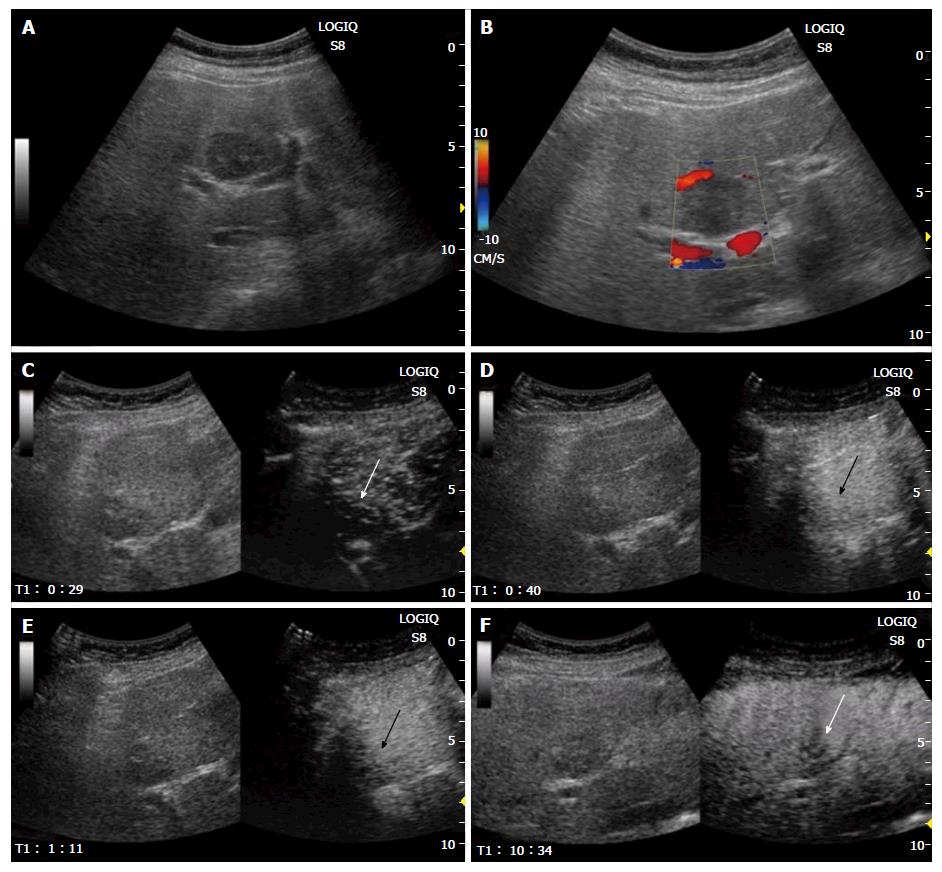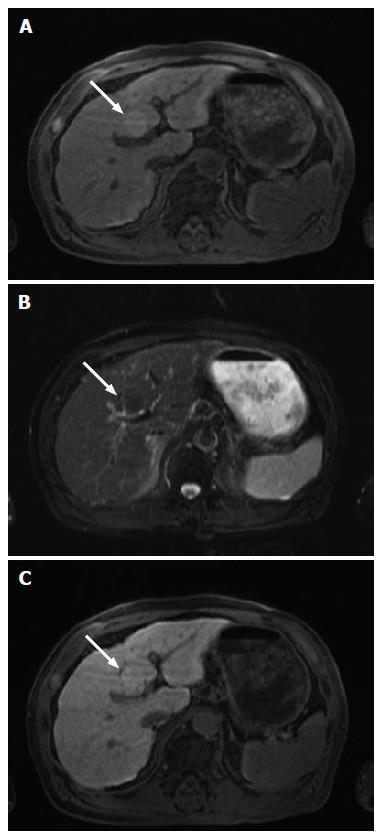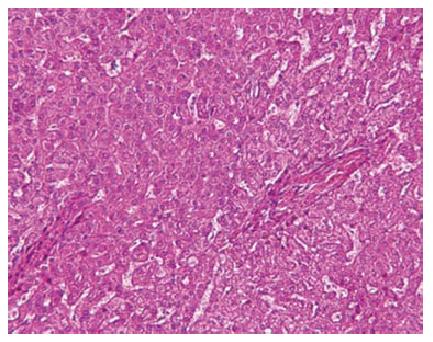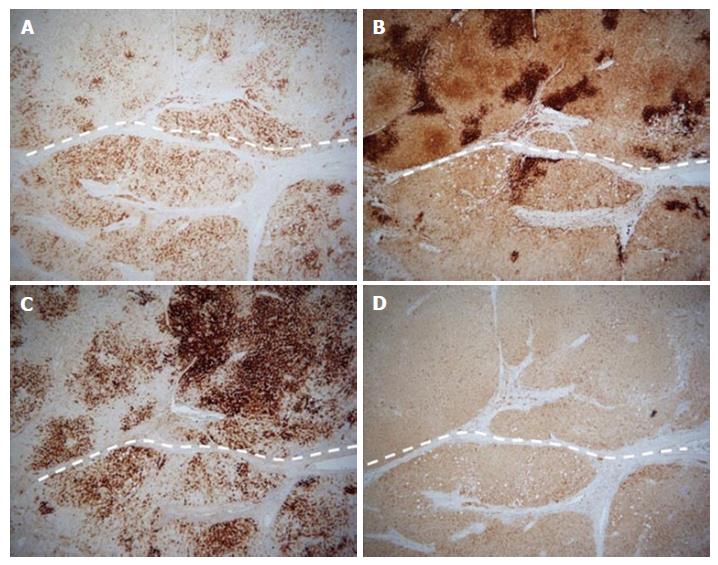Copyright
©The Author(s) 2016.
World J Hepatol. Sep 18, 2016; 8(26): 1110-1115
Published online Sep 18, 2016. doi: 10.4254/wjh.v8.i26.1110
Published online Sep 18, 2016. doi: 10.4254/wjh.v8.i26.1110
Figure 1 Sonography.
Sonographic examination showed a homogenous, hypo-echoic, round mass in segment 4 of the liver (A). Color Doppler sonography revealed no signals in the lesion (B). CEUS demonstrated mild global hypo-enhancement (D, arrow) with inflow of microbubbles from peripheral of the tumor (C, arrow) in the arterial phase, persist enhancement in the portal venous phase (E, arrow), and heterogeneous hypo-enhancement in the post vascular phase (F, arrow). CEUS: Contrast-enhanced ultrasonography.
Figure 2 Computed tomography.
Plain computed tomography (CT) showed a hypodense tumor (A, arrow); Contrast-enhanced CT showed iso-enhancement in the arterial phase (B, arrow); and slightly hypo-enhancement in the portal phase (C, arrow).
Figure 3 Magnetic resonance imaging.
Magnetic resonance imaging (MRI) demonstrated slightly high intensity in T1 weighted image (A, arrow), and slightly low intensity in T2 weighted image (B, arrow). Contrast-enhanced MRI using Gd-EOB-DTPA revealed slightly high intensity in the hepatobiliary phase (C, arrow). Gd-EOB-DTPA: Gadolinium ethoxybenzyl diethylene triamine pentaacetic acid.
Figure 4 Microscopy showed homogeneous cell proliferation with low grade atypia, infiltration of inflammatory cells, ductular reactions, fatty deposit in part, and sinusoidal dilation.
Figure 5 Immunohistochemistry revealed geometric positive staining for serum amyloid A (A), focal positive for glutamine synthetase (B), diffuse and strong positive for C-reactive protein (C), positive for liver-type fatty acid binding protein (D).
Upper side is tumor area.
- Citation: Kumagawa M, Matsumoto N, Watanabe Y, Hirayama M, Miura T, Nakagawara H, Ogawa M, Matsuoka S, Moriyama M, Takayama T, Sugitani M. Contrast-enhanced ultrasonographic findings of serum amyloid A-positive hepatocellular neoplasm: Does hepatocellular adenoma arise in cirrhotic liver? World J Hepatol 2016; 8(26): 1110-1115
- URL: https://www.wjgnet.com/1948-5182/full/v8/i26/1110.htm
- DOI: https://dx.doi.org/10.4254/wjh.v8.i26.1110













